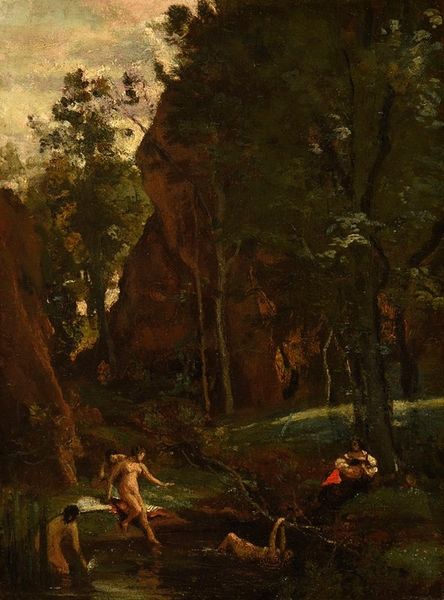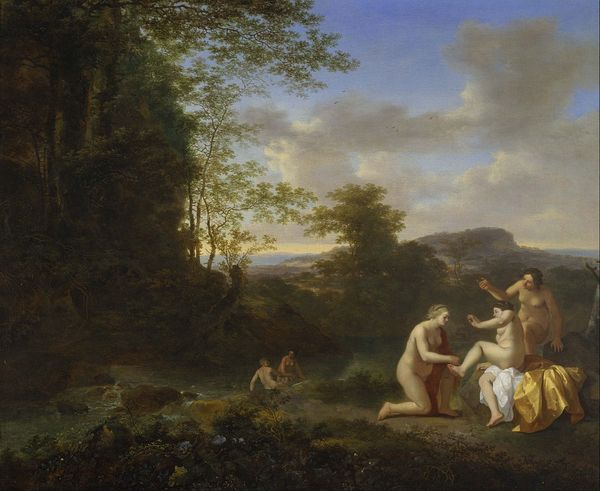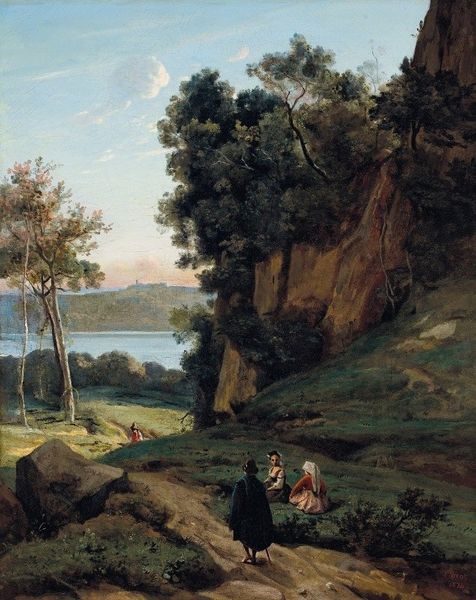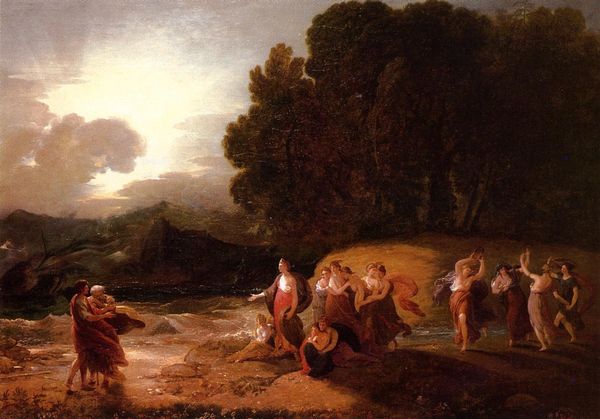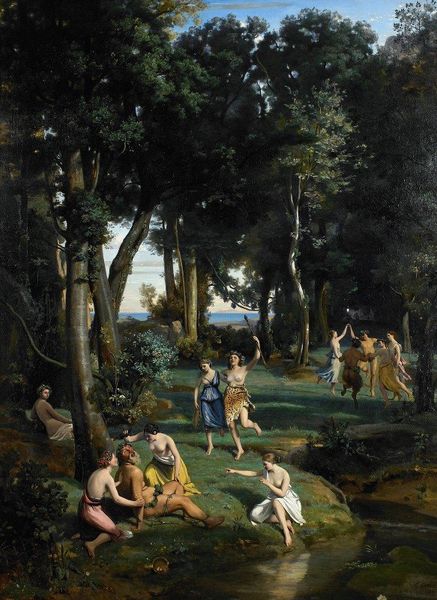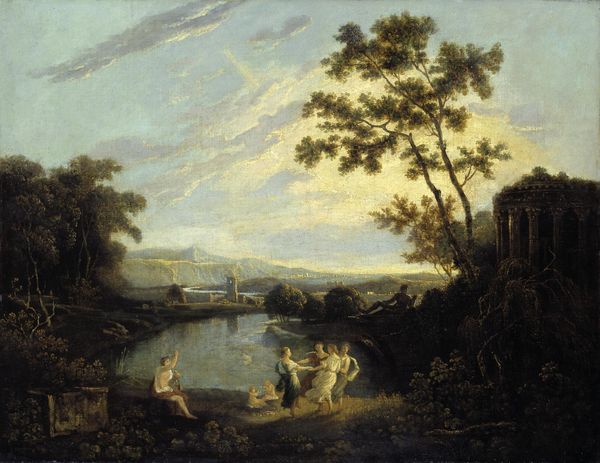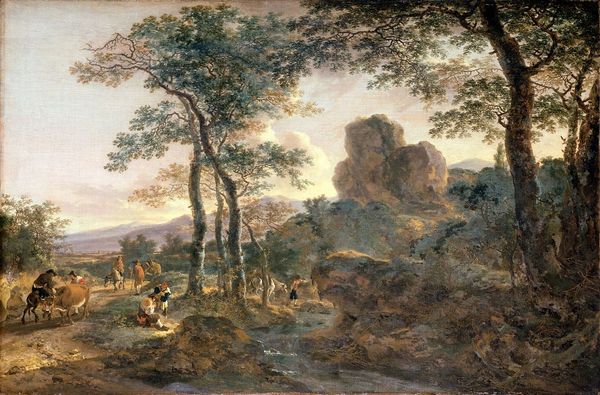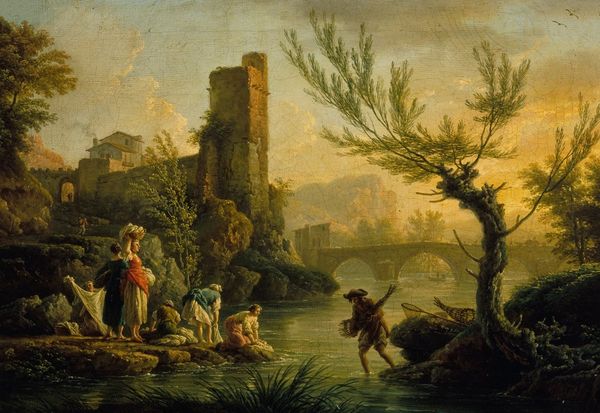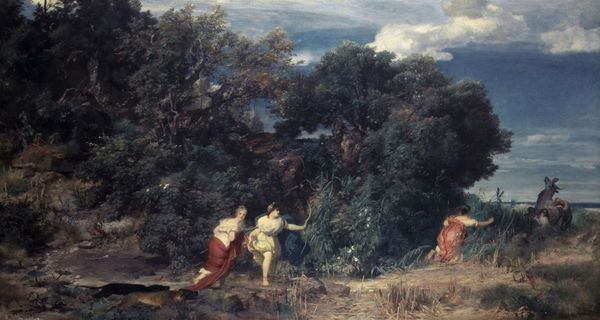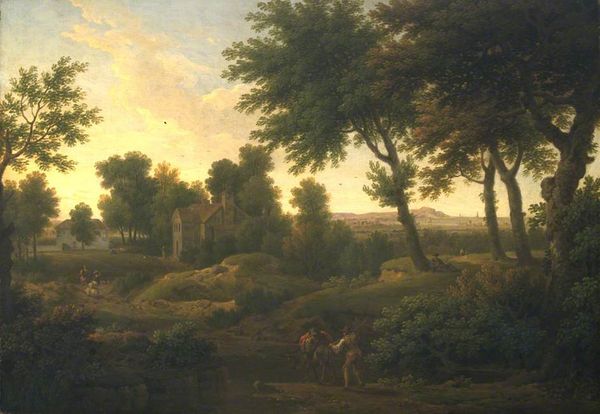
painting, oil-paint
#
allegory
#
fantasy art
#
painting
#
oil-paint
#
landscape
#
figuration
#
romanticism
#
mythology
#
genre-painting
#
history-painting
#
nude
Copyright: Public Domain: Artvee
Editor: We’re looking at "Diana and Actaeon" painted by Camille Corot in 1836, using oil. It’s a scene of mythological figures within an idyllic landscape, and my initial reaction is one of slightly unsettling tranquility, knowing the myth it depicts. How do you interpret this work in the context of its time? Curator: That's a perceptive observation about the unsettling tranquility. Corot, though associated with the Barbizon School and landscape painting, is engaging with a classical narrative—a scene from Ovid where Actaeon stumbles upon the bathing goddess Diana and her nymphs, and is punished for it. What I find fascinating is the public role of art in this era. Genre and mythological painting gained popularity by integrating moral lessons while feeding fantasies in a society shaped by socio-political and institutional contexts. The consumption of imagery itself became a politically charged activity. Where would this piece be placed or understood at the time it was created? Editor: I imagine this type of history painting would likely have been displayed in a Salon or similar public exhibition, appealing to an educated middle class keen on seeing themselves reflected in classical narratives and academic values? Curator: Precisely. The choice of depicting a mythological subject provided artists an opportunity to comment on contemporary society and the politics of the image. Consider, too, the history of the male gaze in art. Actaeon’s accidental voyeurism reflects the viewers who see the artwork displayed publicly and how gender and spectatorship become entwined with questions of social class. What are your thoughts on Corot’s positioning of Actaeon, almost hidden in shadow? Editor: It almost feels like a cautionary note. Placed to the margins and shrouded. Perhaps that emphasizes a concern regarding the disruption of the feminine space and transgression of social order? It feels less of a glorious capture and more of a foreboding reminder. Curator: Yes, and it asks: who gets to look, under what conditions, and what are the consequences? Thanks, this really shifted my view about the power of art within specific social circumstances. Editor: Indeed! This helps me view 19th-century painting with renewed socio-political considerations!
Comments
No comments
Be the first to comment and join the conversation on the ultimate creative platform.
